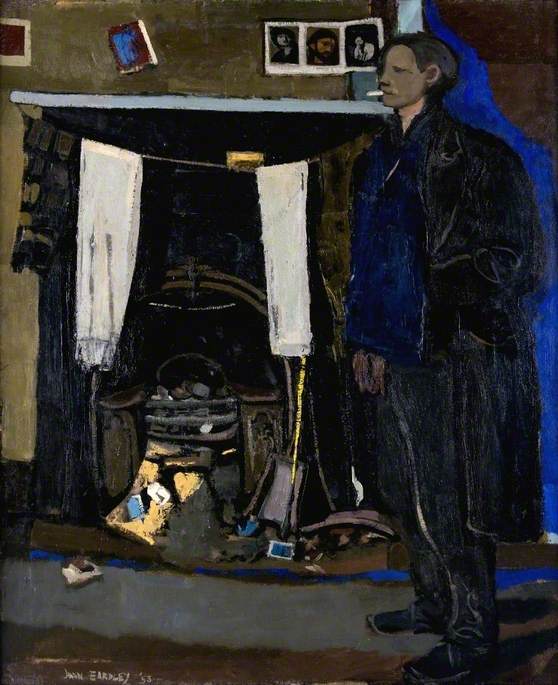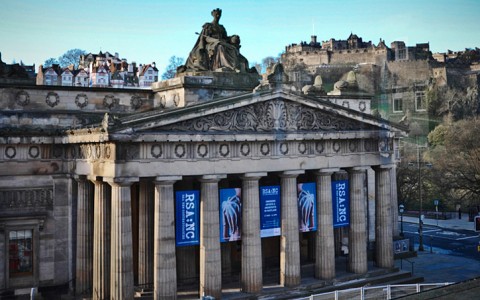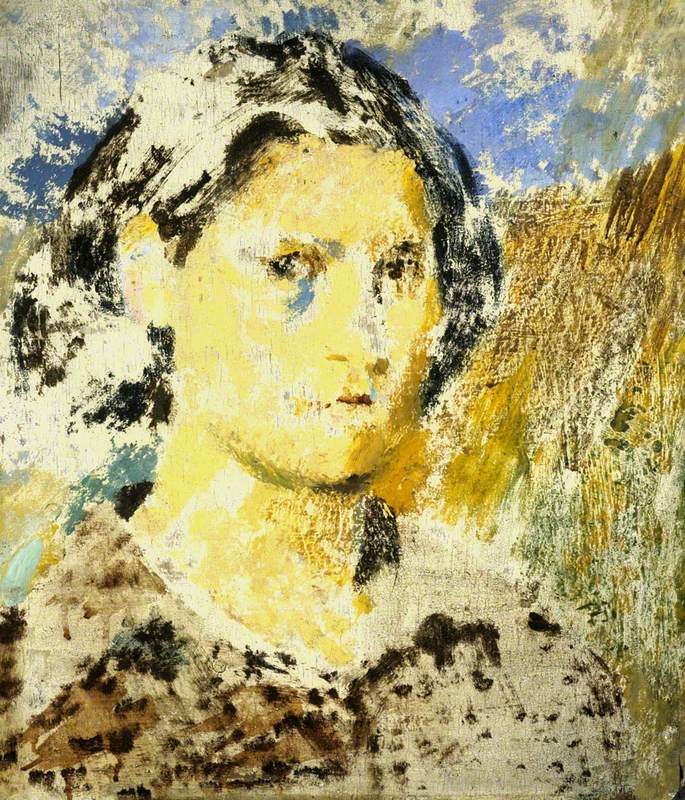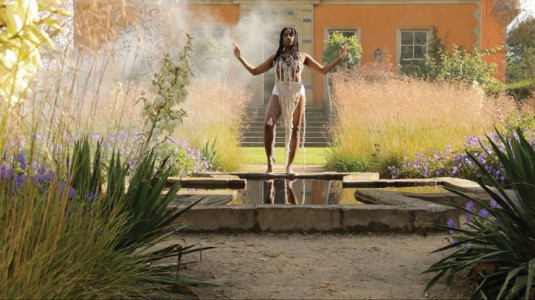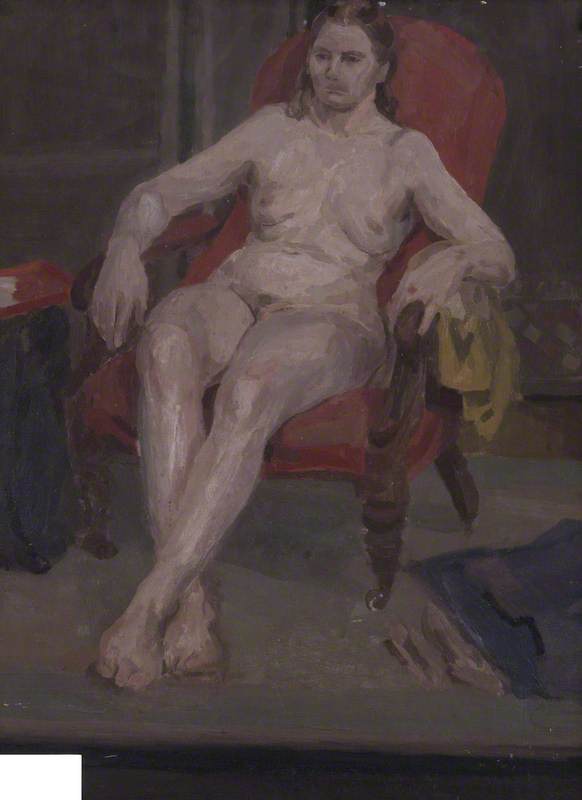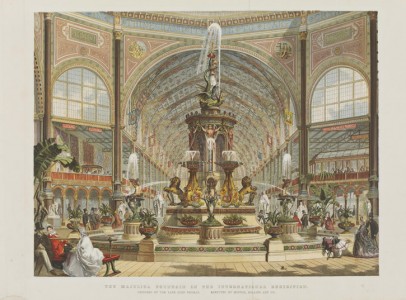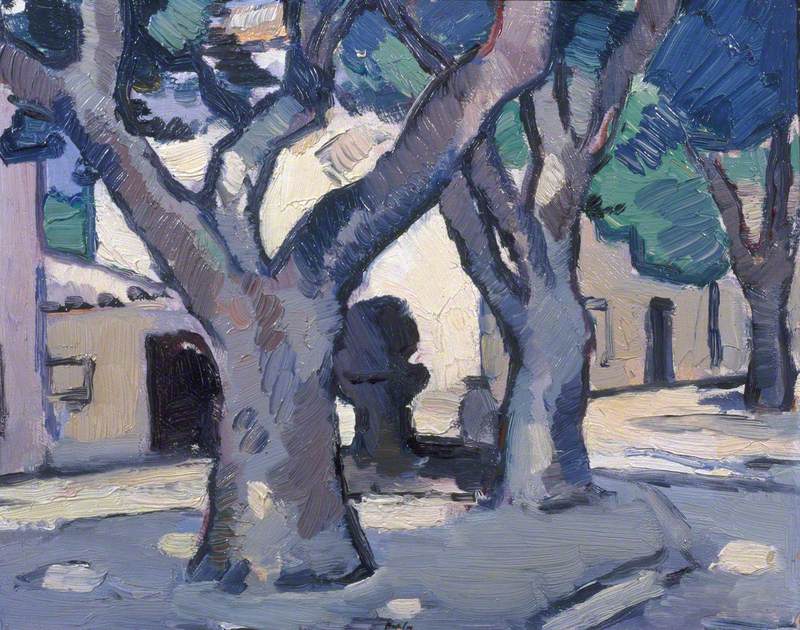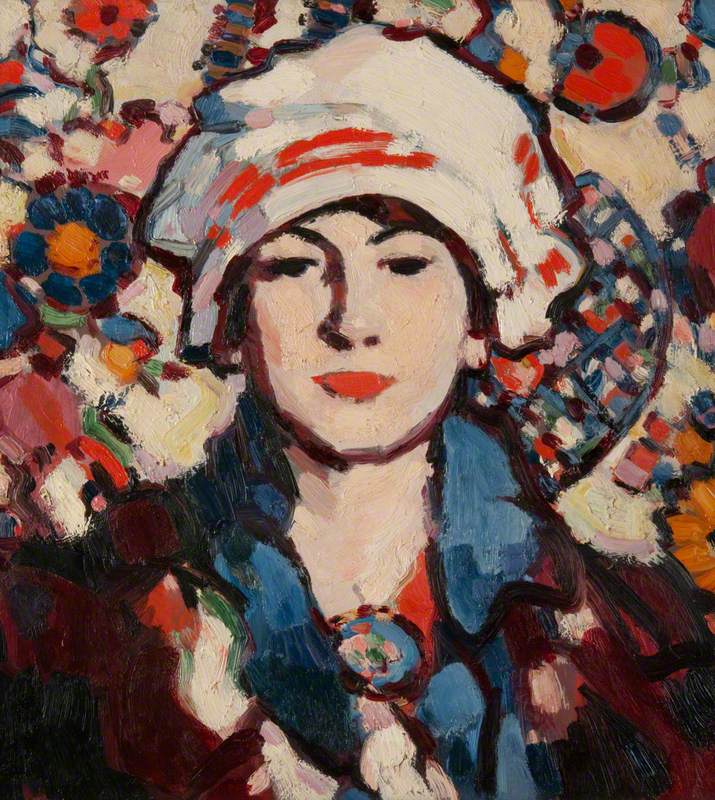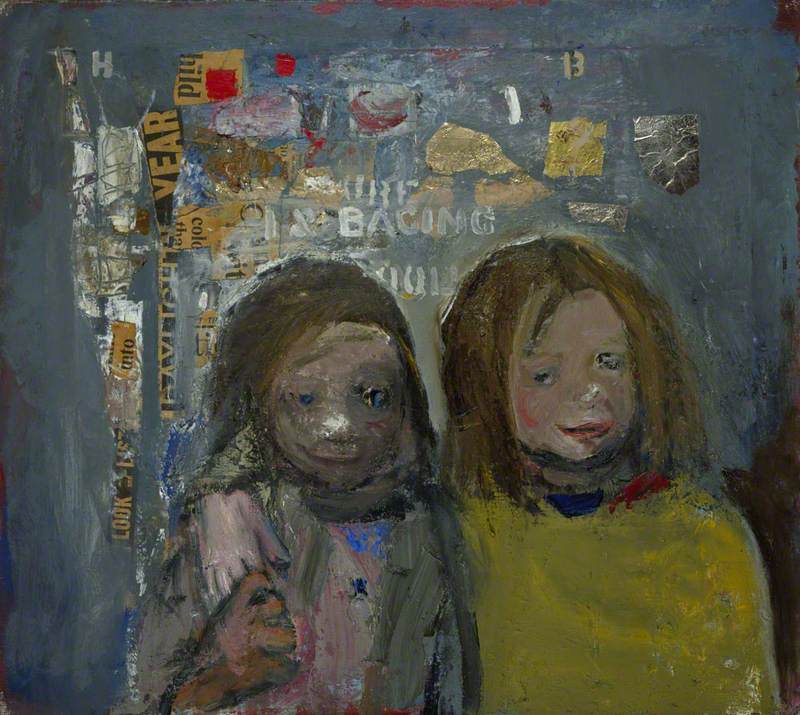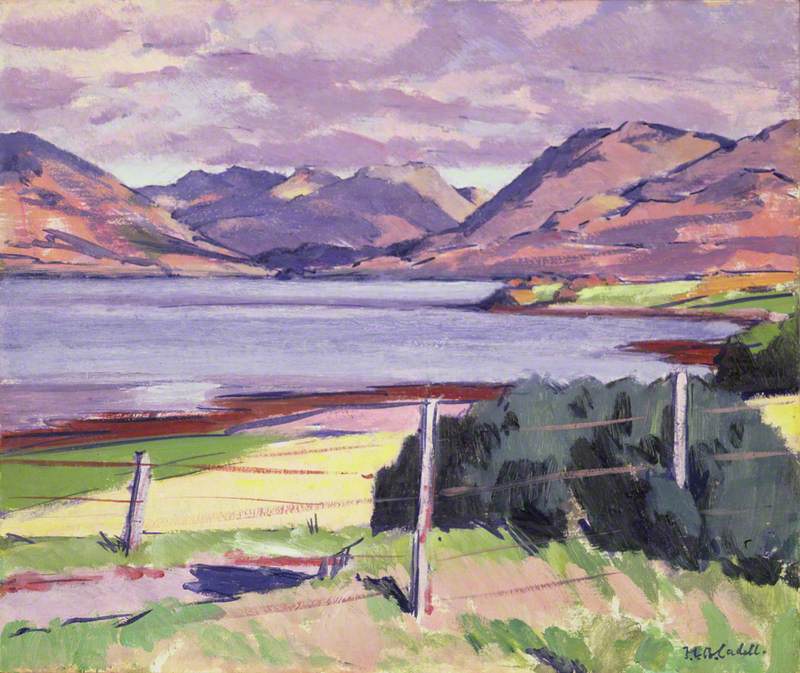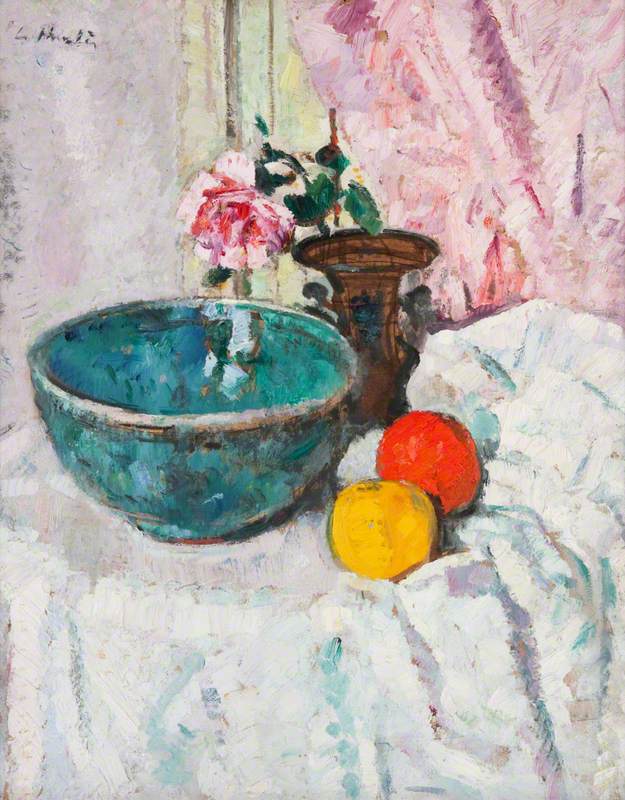Two Children carries immense poignancy. It was left unfinished on the easel of Glasgow artist Joan Eardley when she died of breast cancer in 1963 aged 42. A female artist in postwar Britain, and lesbian who didn't conform to gender norms, her premature death came just when she was breaking through into the London art scene with an exhibition and a single-artist show, and the year she had finally been made a full member of the Royal Scottish Academy.
A huge painting, Two Children is a striking example of the painterly energy of Eardley's mature work, firmly grounded in place. From 1950, she had split her time between two very different locations, the picturesque north-east coastal village of Catterline and poverty-stricken Townhead in the East End of Glasgow whose tenement slums were facing imminent demolition.
The vivid red background of this painting was inspired by the scarlet paintwork of a metal store at the corner of St James's Road above which Eardley had a studio. Stencilled lettering references its signage. Eardley's works are all about decorative formal values, but graffiti and found objects (scraps of newspaper, cigarette packet foil and sweet papers) keep this abstracted composition rooted in real time and place. The sweet wrappers eloquently suggest the carelessness of childhood; hand over mouth, the girl on the left giggles or possibly hides the bulge of a toffee she is chewing.
A sensitive child portraitist, Eardley often explored sibling relationships. These two girls, members of the Samson family, were Eardley's neighbours and favourite models. Their forms are simplified, graffiti-like, yet typically full of character and mischief. 'They are Glasgow', Eardley said.
Unfinished, the painting offers a unique glimpse into Eardley's artistic practice, a lure for the specialist. The painting is also much loved by Glaswegians because it represents the city at a time many recognise, when childhood was lived on the streets.
Purchased in 1994 after a public appeal, it is a fitting painting with which to celebrate the dynamic artist.
Dr Jo Meacock, Curator of British Art, Glasgow Museums

